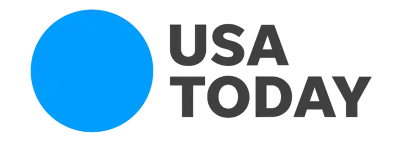After losing a loved one, family members may be entitled to wrongful death compensation. But is proving a wrongful death claim difficult? It can be, depending on the facts surrounding your case. Fortunately, with the assistance of an experienced wrongful death lawyer, you and your family can pursue justice on behalf of the deceased.
What Qualifies As Wrongful Death?
Legal matters in which one person dies due to accidental or intentional negligence are considered wrongful death. For example, imagine a motor vehicle driver decides to operate their car while under the influence of alcohol. If their reckless behavior results in losing your loved one, the fatality may constitute wrongful death.
Keep in mind that wrongful death cases are civil suits, not criminal cases. Therefore, they do not seek to punish defendants for crimes such as homicide and violence. Instead, a wrongful death claim seeks to compensate family members who suffered economic and non-economic losses due to the fatality.
Who Can File a Wrongful Death Suit?
Specific family members may bring a wrongful death suit against the negligent party. In most cases, the deceased’s spouse, children, and parents may file the claim. However, the specifics of who can bring the suit vary between states. For example, any family who received direct financial support from the deceased can pursue a wrongful death claim in some states.
To understand who can file a wrongful death claim in your state, speak with a wrongful death lawyer in your area.
Is There a Wrongful Death Statute of Limitations?
Yes, every state adheres to wrongful death deadlines, and it’s important to know yours. The statute of limitations usually begins from the date of death, not the date of injury. If you fail to take legal action within the necessary timeframe, you may not be able to collect compensation.
To prevent this, consult with a wrongful death attorney right away. A legal professional will take immediate action to file your claim and pursue justice from the liable party.
Proving Wrongful Death
Most wrongful death cases require thorough investigation. Even if you believe the case is clear-cut, you still need to collect sound evidence to prove how the at-fault party caused the fatal accident.
Examples of reliable evidence in a wrongful death case include:
- Witness statements
- Medical and accident reconstructionist evaluations
- Photos or video footage from the accident scene
- Police reports
- Workplace incident reports
To recover compensation in a wrongful death suit, the decedent’s family or representative must prove that another party’s negligence caused or contributed to their loved one’s passing. Without evidence to support the claim, the at-fault party or insurance provider can deny liability to avoid making a settlement.
Duty of Care
To establish negligence, you must prove that the at-fault party owed your loved one a duty of care. The duty refers to a person’s obligation to act within reason and prevent causing unnecessary harm to others.
A qualified lawyer can determine whether the at-fault party owed your loved one a duty of care.
Breach of Duty
Once you establish a duty of care, you must show how the other party violated that obligation. A wrongful death lawyer can investigate your accident and collect evidence to demonstrate how the negligent party violated their duty of care to cause your loved one’s death.
For example, suppose a property owner knows about a dangerous condition on their property but fails to make the area safe or alert others of the danger. If your loved one suffers a fatal accident due to the hazardous condition, the property owner can be held accountable.
Causation
Next, you need to establish that the other party’s actions or inaction caused your loved one’s passing. For instance, if your loved one died in a car accident, you must prove that the death resulted from the collision, not pre-existing conditions.
Establishing causation is one of the hardest steps in proving wrongful death. Insurance adjusters will use anything they can to prove that the accident did not result in the death and avoid making a payout.
Economic and Non-Economic Damages
Finally, you must prove that you incurred damages because of your loved one’s passing. You can do this by presenting evidence demonstrating the loss of economic support that you and your family endured due to the death. You are also entitled to compensation for any expenses associated with your loved one’s funeral service and final medical bills.
Additionally, you may be entitled to recover for non-economic damages that you and your family sustained due to the loss of your loved one. Non-economic damages in a wrongful death suit include pain and suffering, loss of consortium, and loss of parental guidance or spousal support.





